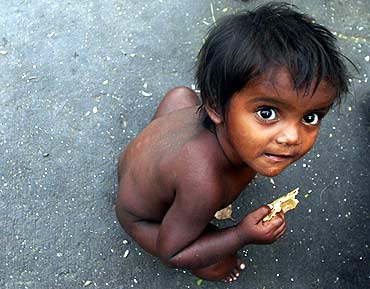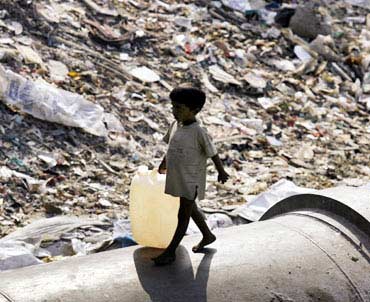Photographs: Arko Datta/Reuters
Analysts and several reports have suggested that despite high economic growth, India is falling behind on achieving the Millennium Development Goals set by the United Nations, especially as it tries to provide basic amenities for a large population.
India has the highest rates of maternal deaths
Image: Pregnant women register their names as they wait for medical assistance in Araria district, BiharPhotographs: Rupak De Chowdhuri/Reuters
The eight MDGs include eradication of extreme poverty and hunger, achieving universal primary education, promoting gender equality, reducing child mortality, improving maternal health, combating HIV/AIDS, and ensuring environmental sustainability.
A UN report, released this week, found that although India's maternal mortality ratio came down from 570 deaths per 1,00,000 live births to 230 in 2008, India still had the highest rates of maternal deaths in the world with at least 63,000 such deaths taking place in 2008 alone.
1.83 million children die before their 5th birthday
Image: A boy walks past a garbage dump in MumbaiOverall, the UN estimated that 1000 pregnant women die every day from complications during pregnancy and child birth. The rate of decline in maternal deaths is less than half of what is needed to achieve the MDG of reducing the maternal mortality ratio by 75 per cent between 1990 and 2015.
A new report 'A Fair Chance at Life' by the international organisation 'Save the Children' finds that out of the 26 million children born in India every year, approximately 1.83 million children die before their fifth birthday, and a poor child in India and elsewhere is more likely to die by 5 than a rich one.
More Indians have access to cell phones than to a toilet
Image: A man takes a shower under a leaking water pipeline in New DelhiPhotographs: Parth Sanyal/Reuters
On the sanitation front, a study released last year by the World Health Organisation and United Nations Children's Fund found that India has the largest number of persons that defecate in the open -- 665 million.
In fact, more Indians have access to cell phones than to a toilet and basic sanitation.
A child dies every six seconds
Image: Children eat food at an anganwadi centre in Kutnabari village in TripuraPhotographs: Jayanta Dey/Reuters
India for instance, is expected to slash the number of its extremely poor by 188 million by 2015 and poverty rates in China are also expected to fall around 5 percent.
But the number of hungry people in the world is still unacceptably high, officials of the Food and Agriculture Organisation said this week, noting that 925 million people will suffer from chronic hunger this year, 98 million down from 1.023 billion in 2009.
"With a child dying every six seconds because of undernourishment related problems, hunger remains the world's largest tragedy and scandal," said Jacques Diouf, head of FAO.






article